In the world of elephants, it’s not often that you see conservationists celebrating. President Xi Jinping of China’s announcement on Friday last week that China will join the USA in enacting near total bans on domestic ivory trade is… I think… worth cracking the bubbly over. We don’t entirely know the detail yet, and there is no timeline, other than what was in the White House’s statement, which includes agreement between China and the USA to work together in “joint training, technical exchanges, information sharing and public education”. But this could be a winning combination.
It will of course take some time to see the effects of these Presidents’ commitments, but this is definitely a big step in the right direction and with President Xi Jinping publicly declaring his support, surely this should make it a priority for Chinese policy. This is most significant because China is the world’s largest consumer country for ivory, representing about 70% of the trade, with the USA coming in second. With these two Presidents clearly stating their position that ivory trade will not be tolerated, this sets a precedent that other countries can now follow. Other south east Asian countries like Malaysia, Vietnam, Philippines, Singapore, Hong Kong and Thailand, also play key roles in the illegal trade, either as consumers or transit countries for illegal ivory.
In the last year or so we’ve seen several big players in the ivory trade undertake ivory stockpile crushings (the governments of the Philippines, Hong Kong, the US and China being a few). While this doesn’t really do anything to stop the trade, it does send a strong message that these governments are committed to ending the bloody illegal ivory trade.
Is the world turning a corner when it comes to ivory trade? Is the whirlwind of awareness raising starting to cut through in key consumer and transit countries for ivory? And most importantly, how long will it take for this to make a difference for elephants? Personally, I won’t be really celebrating until we start to see real population trends for elephants in the wild start to improve, and that’s certainly not happening yet. It was only a very short time ago that both Mozambique and Tanzania reported that at least half of their elephant populations have been poached in the last 5 years. Today, I feel cautiously optimistic, but we do need to keep the momentum up.
As I’m about to fly to Singapore and Melbourne for a week of talks on elephants, I’ve been investigating what the Singapore and Australian governments are doing to stop illegal ivory trade. In May this year, Singapore Customs seized their biggest illegal haul in over a decade, including $6 million worth of ivory. But we have yet to see any significant government ivory-related statements from either Singapore or Australia. When I met with Singaporean authorities last year to discuss this issue, I was informed that the Lion City would be crushing its official ivory stockpile shortly, but I haven’t heard anything since. In addition, with the strong influence that both southern hemisphere powerhouses have over other countries in Asia, particularly those that are struggling to get on top of this problem, I think both countries could do more to help this problem by exerting their influence in the region. It’d be great to see support from the governments of Australia and Singapore for countries like the Philippines and Thailand, to help them in the fight against illegal wildlife trade.
We know from the latest CITES report that the level of poaching of elephants is still unsustainable (and has been since 2008) – see the graph below. Anything above the red line is unsustainable (measured against natural population growth rates).
So elephants are far from being out of the woods. However, in addition to last Friday’s announcement from the White House, what also gives me some hope is that Wild Aid is starting to demonstrate some significant results from their Public Service Announcements in China, featuring the likes of David Beckham, Prince William and Chinese basketball player, Yao Ming, for both ivory and rhino horn. Wild Aid’s assessments suggest that awareness of this issue in China is improving (comparing 2012 to 2014), with a 51% increase in people surveyed realising that poaching is a problem and 90% of those who had seen the PSAs saying they would not buy ivory as a result. Read the report here.
Around the world on Sunday 4th October, hundreds of thousands of elephant- and rhino-lovers will congregate at the March For Elephants and Rhinos in 130+ cities. I’ll be marching and speaking at the Melbourne one, which has over 500 people coming. Melbourne residents can sign up to the march on Facebook. Anyone can sign the petition put together by the March organisers to encourage the Australian government to go further – click here to sign.
For those who want to learn more about the illegal ivory trade, please also come to watch the ‘Let Elephants Be Elephants‘ film and hear the latest from me on elephants the day before in Melbourne (this Saturday at 11am). You can RSVP here (where there are also full details of time and venue on Saturday). Singaporeans can join my talk at the Botanical Gardens this Friday at 4pm (full details here). It’s never been so important to keep the momentum up and show the world that we care about elephants and rhinos and will not stand by while they perish on our watch. Let’s all stand together and encourage all governments to follow the lead of China and the USA and commit to ending the illegal ivory trade!

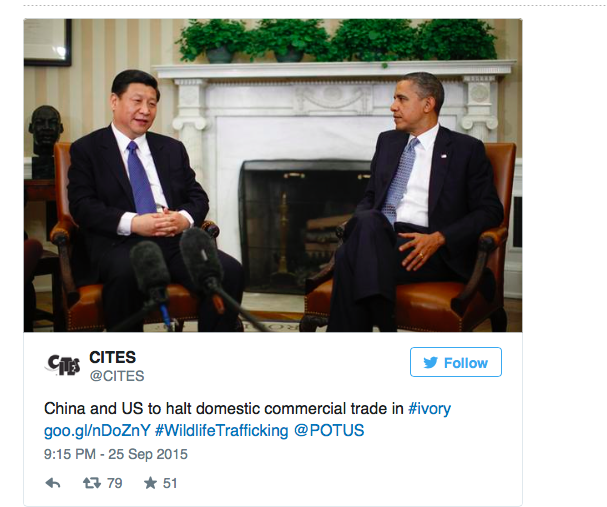
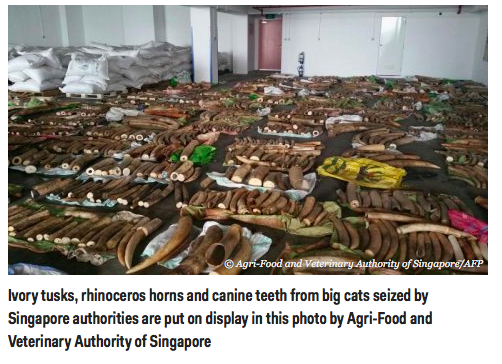

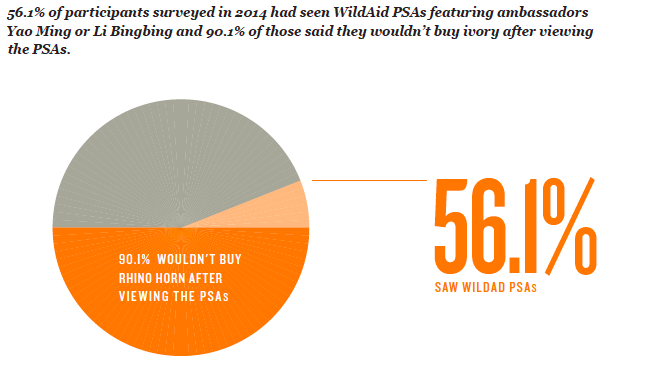
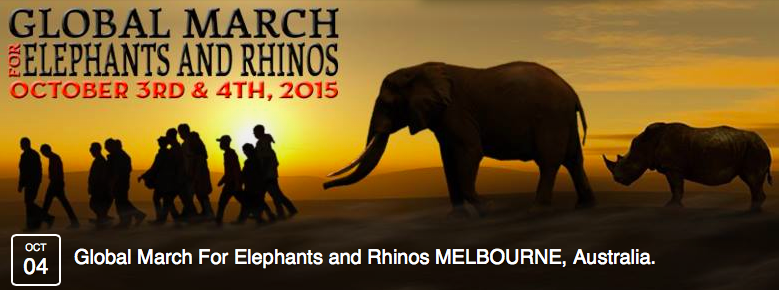
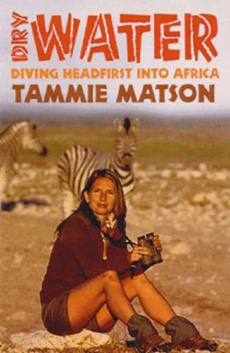

Thanks for introducing yourself Pam and good to know another lover of elephants. Really what we should be aiming for is for elephants to have a genuine economic value ALIVE and in the wild, so more than just their ivory. Ecotourism done well can achieve this (look at some of the great examples of community based tourism partnerships in north west Namibia, for example, and of course in the Okavango Delta, Botswana, which is a beacon of hope). But this can’t work everywhere – eg. people aren’t so keen to go to the Congo right now but it’s one of the places that needs this philosophy more than most to save the last of the forest elephants. So what do we do there to give live wild elephants an economic value? One of the great challenges we face in conserving elephants is to marry the needs of local people who are living in poverty, where elephants are more of a threat than a benefit, with the conservation of elephants in the wild, and that’s more challenging in places where tourists don’t want to go. Ivory isn’t the answer to that problem, but tell that to Joseph Kony’s LRA fighters – they don’t care about the elephants they kill. That’s why we have to stop the trade, and make people aware of the damage done when they buy ivory. There’s so much ignorance out there. When I go around talking about the ivory trade in Asia, people often ask why we can’t just chop off the tusks and then let the elephant go. A lot of people don’t realise that elephants have ivory for a reason – for fighting/defence and foraging. Nature wouldn’t have given elephants ivory if it didn’t serve a purpose. And as you know, to get the tusks the animal has to be killed, very brutally, because the tusks go deep into the face of the elephant. But the fact of the matter is that in a lot of the consumer markets people just don’t know.
Thank you for your reply Dr Tammie. I am part of the Global March for Elephants movement, who believe that ALL ivory trade must cease. I have also had some correspondence with one or two others who have lived with elephants for many years and who don’t believe ivory stockpiles come primarily from natural deaths. You have to be a very lucky elephant these days to live until your late-60s! I agree that the local communities must benefit from their wildlife, but I think we all must think harder about whether they must benefit from their elephants’ ivory. Note too that my colleagues in Botswana tell me that Botswana have sent a clear message that they no longer wish to sell their ivory stockpiles. They have seen the light. Some things just seem wrong to benefit from.
Hi Pam. Thanks for raising this. It’s probably a long conversation but I’ll try and address a few of your points here. In China, there is both legal and illegal trade in ivory. China was granted permission by CITES to buy ivory from 3 southern African countries’ stockpiles in 2008 (Botswana, Namibia and Zimbabwe) in a one off sale (actually permission was granted earlier in 2002 I think, but it didn’t happen until many years later). 2008 is about when we saw poaching levels in Africa increase, so many believe that there is a strong link between the one off legal sale of that stockpiled ivory from southern Africa and the increase of legal ivory on the market in China and the resurgence of poaching. There is probably more to the story than that, the much greater wealth in China for one thing, but I think it’s probably fair to say that much illegal ivory entered markets thereafter using the legal ivory channel as a smokescreen. This is still a matter for debate – not all conservationists agree on whether the legal sale was the trigger or cause alone. In southern African countries like Botswana and Namibia, where they have healthy growing populations of elephants, and good conservation programs, they want to be able to benefit from their ivory stockpiles, which are actually mostly from naturally deceased elephants, and I think that’s fair. Considering how many really poor people are in these countries, it makes sense to me for local people to benefit from their own natural resources, and if the money from the ivory is actually going into sustainable development in the communities that live with elephants, as well as conservation, then this is not a bad thing. The problem is that Africa’s a very big place and while the elephant populations in Namibia and Botswana might be going well, the same can’t be said for central and west African populations, and nowadays east African countries like Kenya and Tanzania (and also Mozambique) are being hit hard by poaching. We have to look at the big picture and decide what’s best for elephants overall, while still managing each population on a case by case to the extent that we can. There are no easy answers. If it was possible to have a legal trade in ivory from naturally deceased elephants, free from corruption and greed, then I’d be all for it. The problem is I’m not sure that’s possible in the money hungry world we live in, where you still have a lot of people living in a very low standard of existence among the wildlife we want to see conserved. And that’s why I’ve focused my efforts on reducing demand and raising awareness in the consumer markets through the Let Elephants Be Elephants campaign, along side encouraging people to go to Africa and support the local people who live with elephants through my safari co., Matson & Ridley Safaris. Ultimately I think the ivory belongs to the elephants. But if we want to see elephants in the wild in the future, we better do all we can to ensure that the people who live with them benefit from their presence.
More info here:
Guardian article, about China being given green light to buy stockpiled ivory – http://www.theguardian.com/environment/2008/jul/15/conservation.wildlife
CITES press release, 2008 on ivory stockpile sales – https://www.cites.org/eng/news/pr/2008/081107_ivory.shtml
Dear Tammie, could you please respond to this question publicly. You very often refer to the “illegal” ivory trade. Is this the only portion of the trade that you are opposed to – ie only ending the “illegal” trade? There are two types of trade of course – legal and illegal. “Legal” trade is approved by CITES and still happens. Are you opposed to ALL ivory trade? – or just that which hasn’t been approved by CITES? Your WWF background would suggest, as you write, that you are only opposed to “illegal” trade? Please clarify for us publicly. Thank you. I think there are many people who need this clarified and others who, sadly through lack of knowledge, do not know to make this distinction.
I totally agree Naomi. President Obama has taken a great step here, but like everything he’s tried to do in US politics it seems to take a lot more to get things over the line. Can you tell us more about what we can do to help support the US to move forward on this? This is still only talk at the moment – we don’t know what action is coming yet.
I think it is worth mentioning that this is a huge step forward for the US as well. Instead of focussing just on Asia we need to recognise the global nature of this trade. The US is the second biggest ivory market and while most of this is pre ban it is important to understand the message this sends.
It has been and remains an uphill battle to ban domestic Ivory trade in the US and even though President Obama has committed to this it doesn’t mean it will happen. That’s not the same for China. When President Xi makes this statement it becomes much much harder to block it.
The US also needs to, and has shown leadership here and the impact of its own ban should not be under estimated.